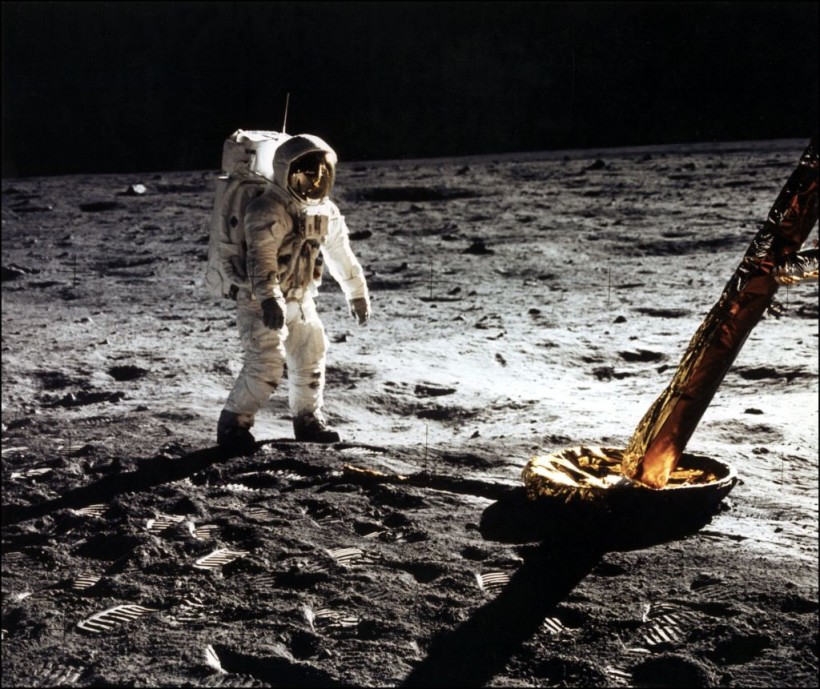Israel signed the Artemis Accords on Wednesday, joining the US-led effort to place humans on the Moon by 2025 and thereafter on Mars, according to the Israel Space Agency (ISA).
The agreement, which NASA Administrator Bill Nelson and ISA Director-General Uri Oron signed, establishes principles for collaboration in space research and the peaceful use of the Moon, Mars, comets, and asteroids.
Xinhua news agency (via National Herald) said Australia, Ukraine, Mexico, the United Arab Emirates, Italy, Brazil, the United Kingdom, Japan, Luxembourg, New Zealand, Poland, South Korea, and Canada are among the program's other participants.
The agreement will allow Israel to participate in a range of research and science collaborations and increase commercial and economic partnership with the signatories' space sectors.

Picture taken 20 July 1969 of astronaut Edwin E. Aldrin Jr., lunar module pilot walking on the surface of the moon near the leg of the Lunar Module (ML) "Eagle" during the Apollo 11 extravehicular activity (EVA).
Israel Joins NASA's Artemis Mission
According to The Hill, Israel will establish chances for Israeli enterprises to participate in America's return to the moon program by signing the Artemis Accords. In collaboration with Lockheed Martin, an Israeli firm named Stemrad has created an anti-radiation vest called AstroRad, which has previously been tested on the International Space Station (ISS) and is set to fly on the Artemis 1 mission. Future astronauts will benefit from the vest's radiation protection in deep space.
ALSO READ: Lunar Rover Missions: Will NASA, Other Countries Set Foot On Moon By 2022?
Furthermore, an Israeli astronaut is expected to embark on an Artemis mission to the moon at a certain time in the future. Ilan Ramon, an Israeli astronaut who died on the ill-fated Columbia STS-107 mission, was the first Israeli astronaut to fly for NASA. Eytan Stibbe, a former fighter pilot and entrepreneur from Israel, is scheduled to go to the International Space Station as part of the private Axiom-1 trip in March 2022. During his time in the orbiting space station, he will conduct a variety of experiments using Israeli technology.
The day an Israeli astronaut steps on the moon, potentially accompanied by an astronaut from the United Arab Emirates, will be a watershed moment in not just the Middle East's but also the world's history. Israel's emergence as a space power would be heralded by this event.
NASA Artemis Mission
NASA wants to build a long-term presence on the moon and utilize what it learns to plan a crewed mission to Mars in the 2030s, Times of Israel said. The initiative's goal is to create a permanent colony on the moon, which will include an Artemis Base Camp on the surface and a specialized station, Gateway, in lunar orbit, to allow "robots and people to explore more and perform more science than ever before."
The Artemis Accords, first signed by its founding members in October 2020, are based on ten principles governing civil space exploration. Peaceful exploration, openness, the distribution of scientific data, emergency aid to workers from all nations, and the utilization of space resources following the 1967 Outer Space Treaty, which serves as the foundation of international space law, are among these principles.
The first autonomous test flight, Artemis 1, is set to fly in March using NASA's new SLS rocket, but many anticipate NASA to delay the launch until the summer. Artemis 2 is set to premiere in 2023, with Artemis 3 following in 2024. In 2025, a lunar landing is predicted.
RELATED ARTICLE: NASA Artemis I Moon Mission: Space Agency Targets Late February for 'Wet Dress Rehearsal' On The Launch Pad
Check out more news and information on Space in Science Times.




![Earth's Quasi-Moon Kamo‘oalewa Could Originate From Lunar Surface Not Asteroid Belt [Study]](https://1721181113.rsc.cdn77.org/data/thumbs/full/53275/89/56/50/40/earths-quasi-moon-kamo-oalewa-could-originate-from-lunar-surface-not-asteroid-belt-study.png)









